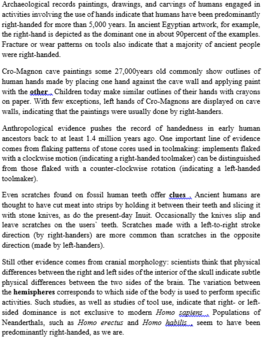Read the following passage and mark the letter A, B, C, or D on your answer sheet to indicate the correct answer to each of the questions from 35 to 42.
Marianne Moore (1887-1972) once said that her writing could be called poetry only because there was no other name for it. Indeed her poems appear to be extremely compressed essays that happen to be printed in jagged lines on the page. Her subject were varied: animals, laborers, artists, and the craft of poetry. From her general reading came quotations that she found striking or insightful. She included these in her poems, scrupulously enclosed in quotation marks, and sometimes identified in footnotes. Of this practice, she wrote, “Why many quotation marks?’ I am asked ... When a thing has been so well that it could not be said better, why paraphrase it? Hence, my writing is, if not a cabinet of fossils, a kind of collection of flies in amber.” Close observation and concentration on detail and the methods of her poetry.
Marianne Moore grew up in Kirkwood, Missouri, near St. Lois. After graduation from Bryn Mawr College in 1909, she taught commercial subjects at the Indian School in Carlisle, Pennsylvania. Later she became a librarian in New York City. During the 1920’s she was editor of The Dial, an important literary magazine of the period. She lived quietly all her life, mostly in Brooklyn, New York. She spent a lot of time at the Bronx Zoo, fascinated by animals. Her admiration of the Brooklyn Dodgers-before the teammoved to Los Angeles-was widely known. Her first book of poems was published in London in 1921 by a group of friends associated with the Imagist movement. From that time on her poetry has been read with interest by succeeding generations of poets and readers. In 1952 she was awarded the Pulitzer Prize for her Collected Poems. She wrote that she did not write poetry “for money or fame. To eam a living is needful, but it can be done in routine ways. One writes because one has a burning desire to objectify what it is indispensable to one’s happiness to express
Where did Moore grow up?
A. In Kirkwood
B. In Brooklyn.
C. In Carlisle
D. In Los Angeles




Đáp án A